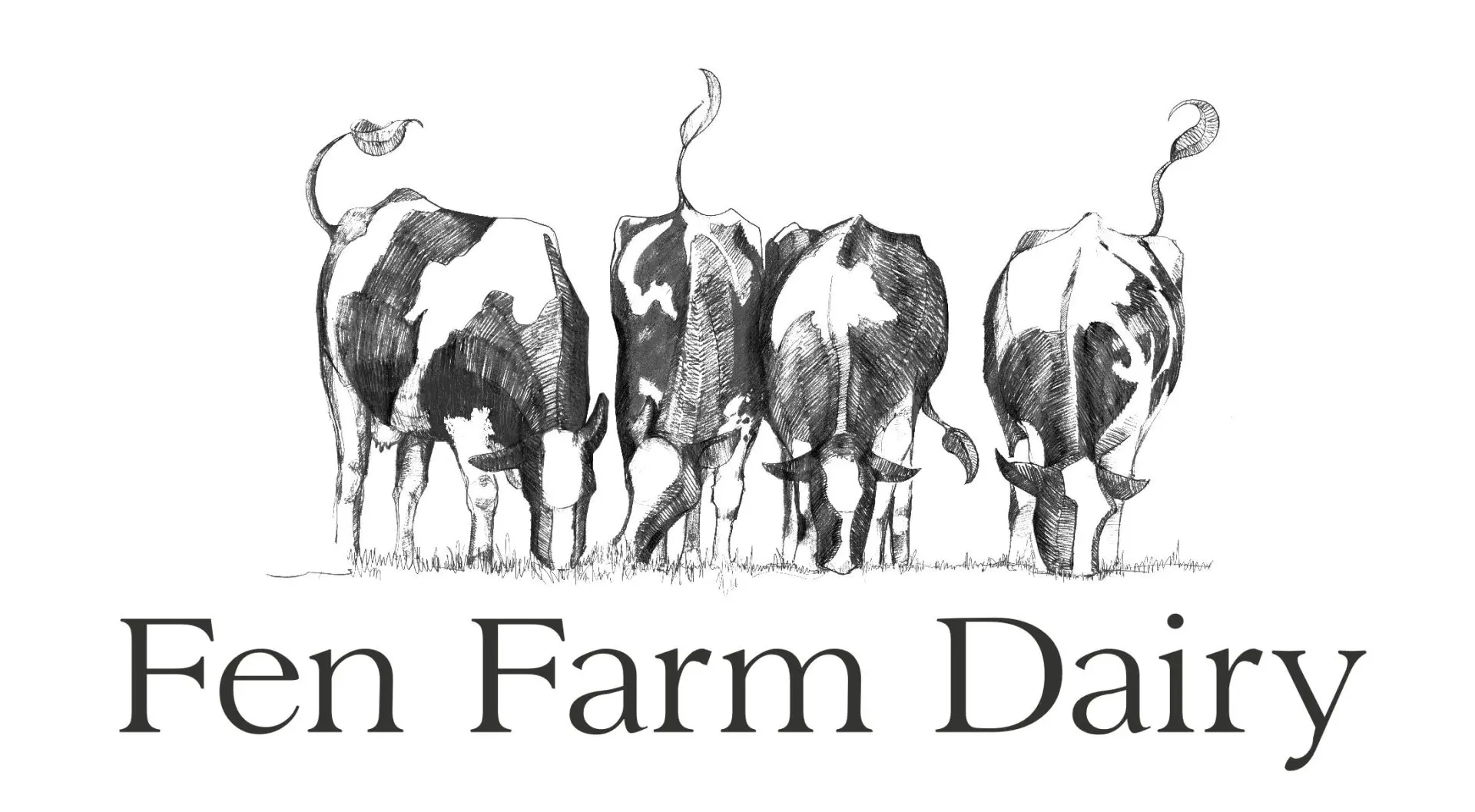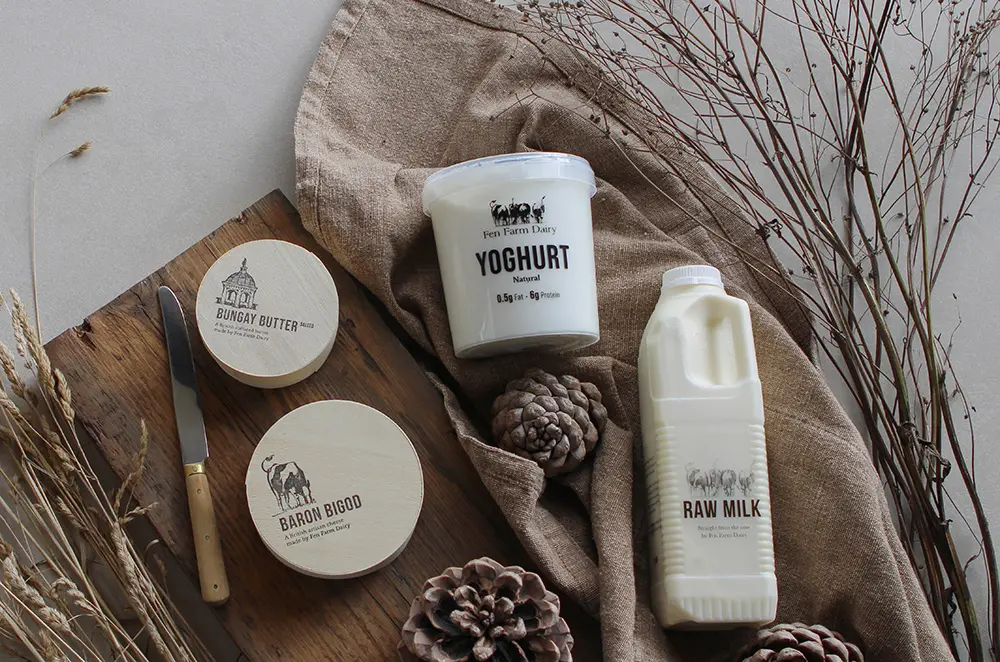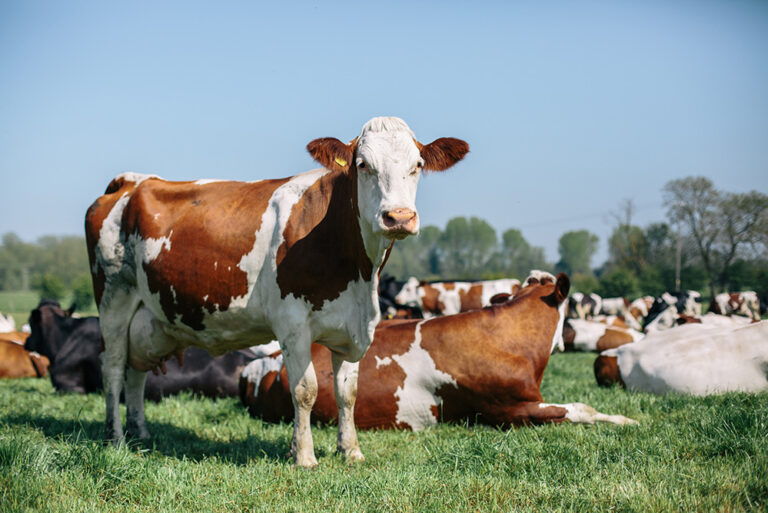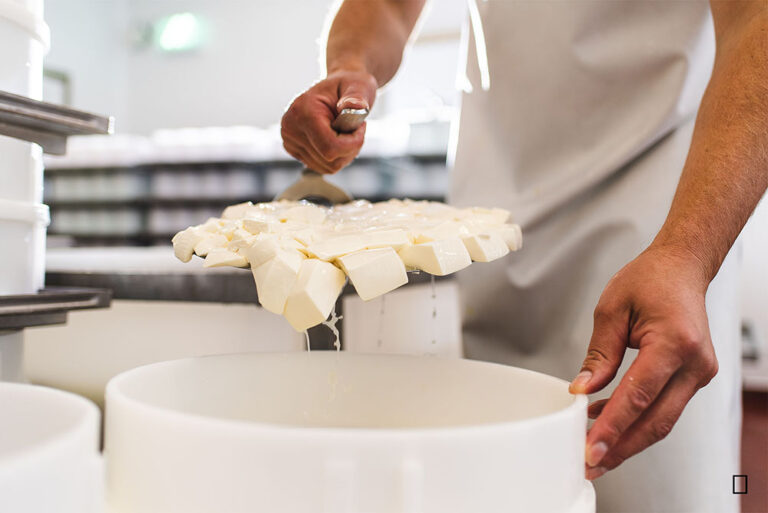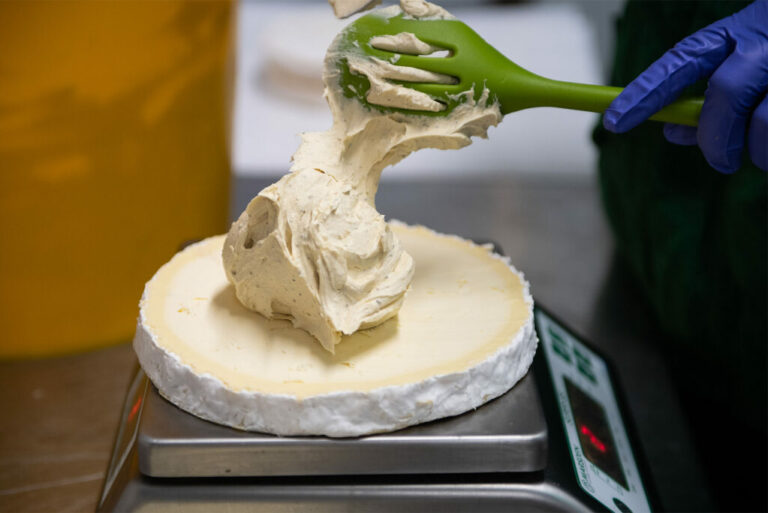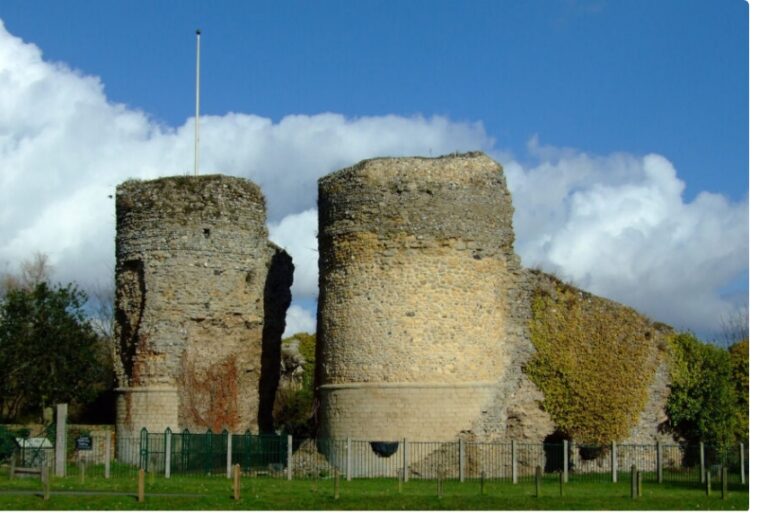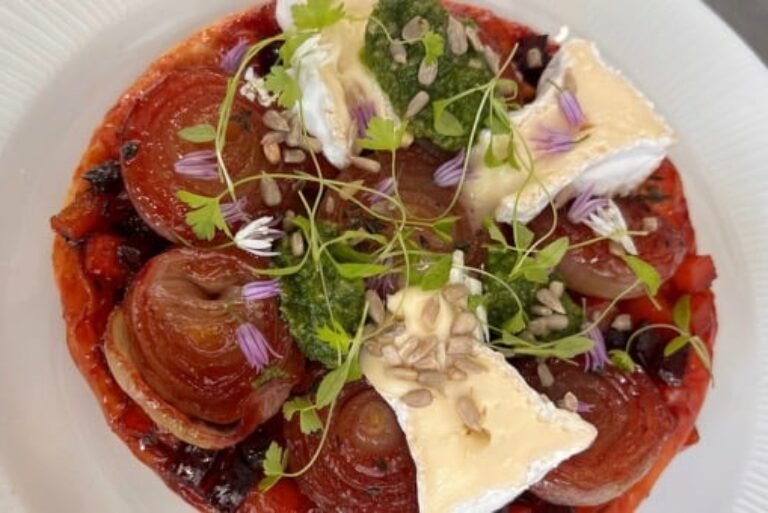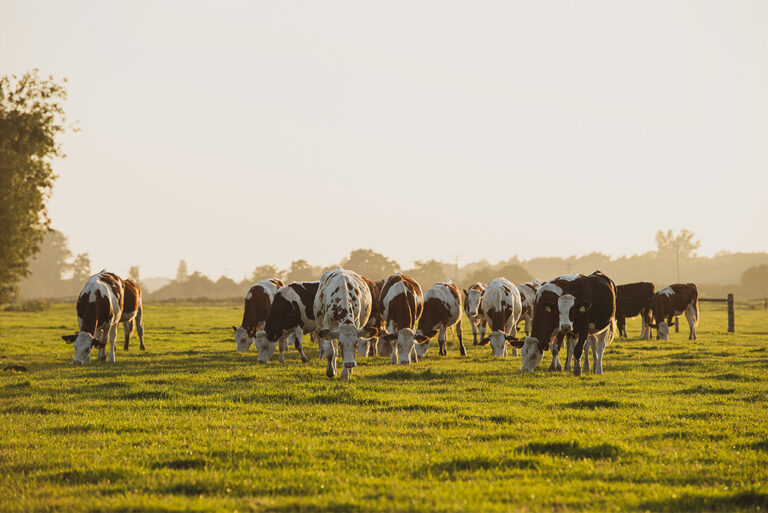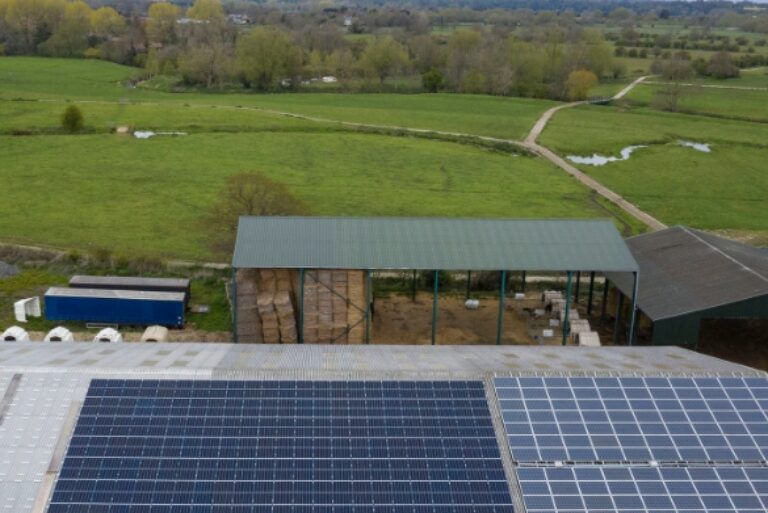
Everything you need to know about Baron Bigod
This page highlights everything amazing about Baron Bigod. If you love the cheese, we think you’ll appreciate how it’s made and the many elements that go into creating this special product. If are just looking for the ‘Buy Now’ button, see below!


Why does it taste so good?
Baron Bigod is the finest traditional Brie-de-Meaux style cheese produced in the UK and one of only a handful of its type in the world to be made by the farmer on the farm.
Beneath the nutty, mushroomy rind, Baron Bigod has a smooth, silky golden breakdown which will often ooze out over a delicate, fresh and citrussy centre. Baron Bigod is made by hand in small batches, very early in the morning so that we can use the fresh milk straight from the cow. The mould cultures are added to the warm morning’s milk and it is gently gravity fed into small vats just a few metres from the milking parlour, where the rennet is added. The curds are carefully hand-ladled into large moulds, using traditional pelle-a-brie ladles and the young cheeses are hand salted and then aged for up to 8 weeks in a cave-like environment.
It is a unique expression of the incredible milk of our free-ranging Montbeliarde cows and the diversity of our wildlife-rich grazing marshland.
Most dairy produce is made away from the farm. It’s surprisingly rare to find a business today that controls the whole process from start to finish.
These are our 3 secrets:
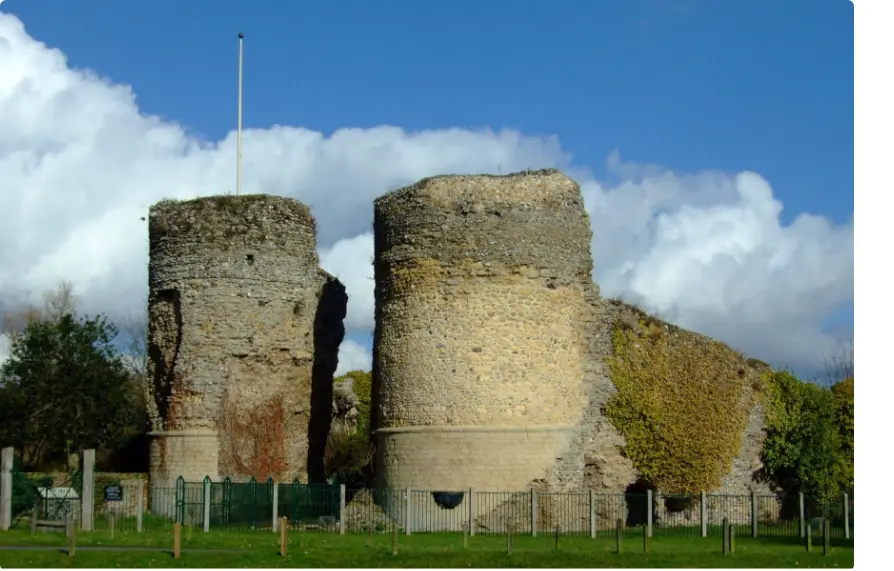
Who Was Baron Bigod?
Our cheese is named after Baron Hugh Bigod, a French nobleman who arrived on British soil in 1066 with William the Conqueror (AKA King William I).
After a successful conquest of Britain, the new King William made Hugh a Baron and gifted him most of East Anglia. Hugh set about building his dream castle on the picturesque River Waveney at Bungay.
The ruins of Baron Bigod’s castle still stand to this day, overlooking our farm. Our cows graze today on those same fertile river marshlands that the castle livestock would once have grazed, almost 1000 years ago.
Making Baron Bigod
The quality of our cheese today is the result of a decade of learning. Follow us inside our cheese making rooms to discover the secrets behind our award-winning Baron Bigod Brie.
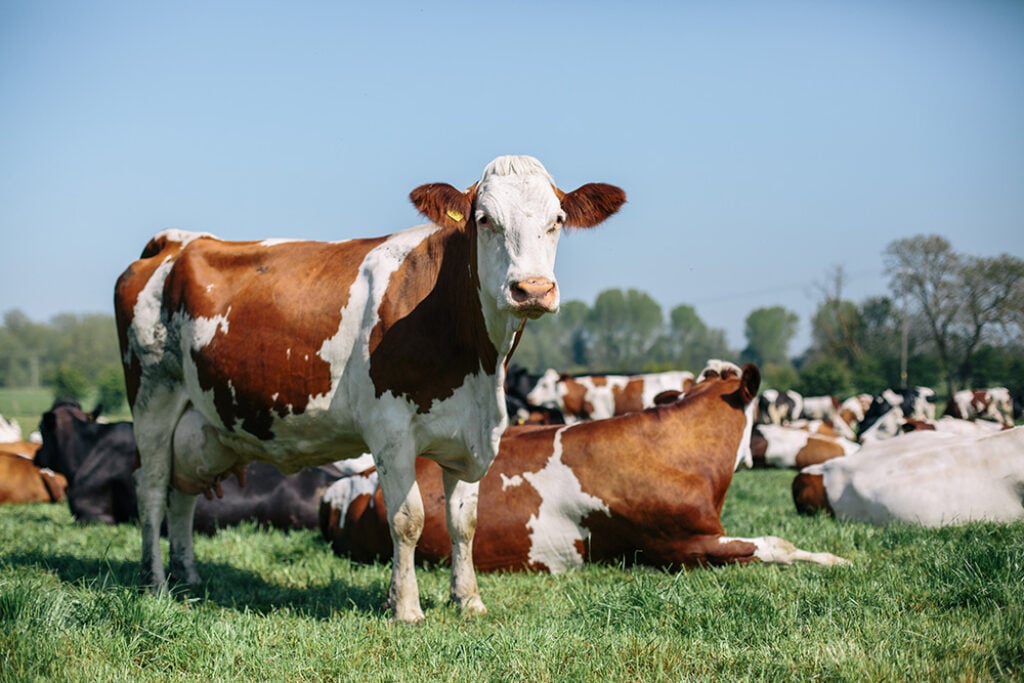
1
Early in the morning when our milk is still warm and fresh from the milking parlour, it heads directly into the cheese making building next door. What makes our process so unique is that we gently feed the milk into our cheesemaking vats via gravity. This avoids using pumps, which would destroy the flavour and integrity of the delicate milk.
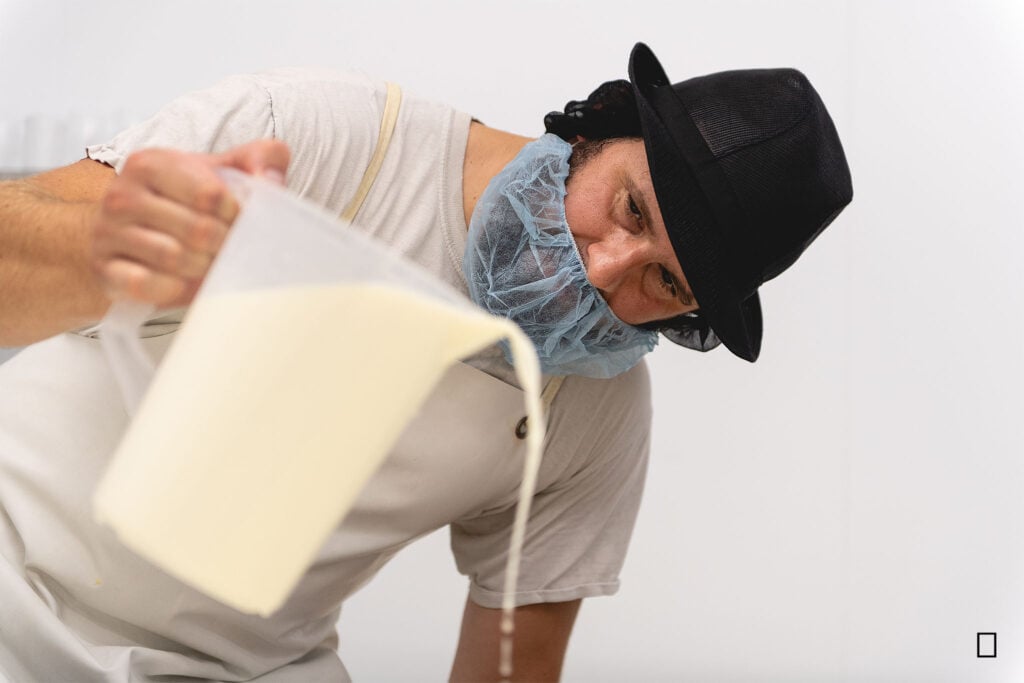
2
The milk is gently heat-treated. Next, Head cheesemaker Marc ads carefully selected strains of lactic bacteria to the milk. These live cultures quickly begin to acidify the milk, to start the cheesemaking process.
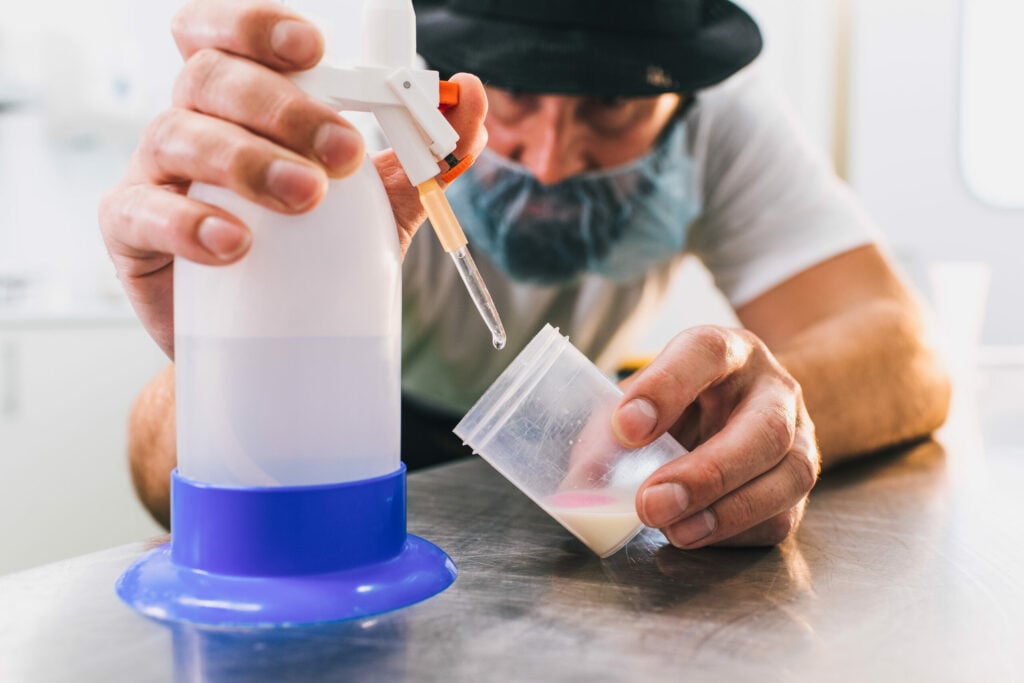
3
During the early stages of the cheesemaking process, we keep testing the milk temperature and acidity levels. This is incredibly important to make sure the cheese is a consistent product every time.
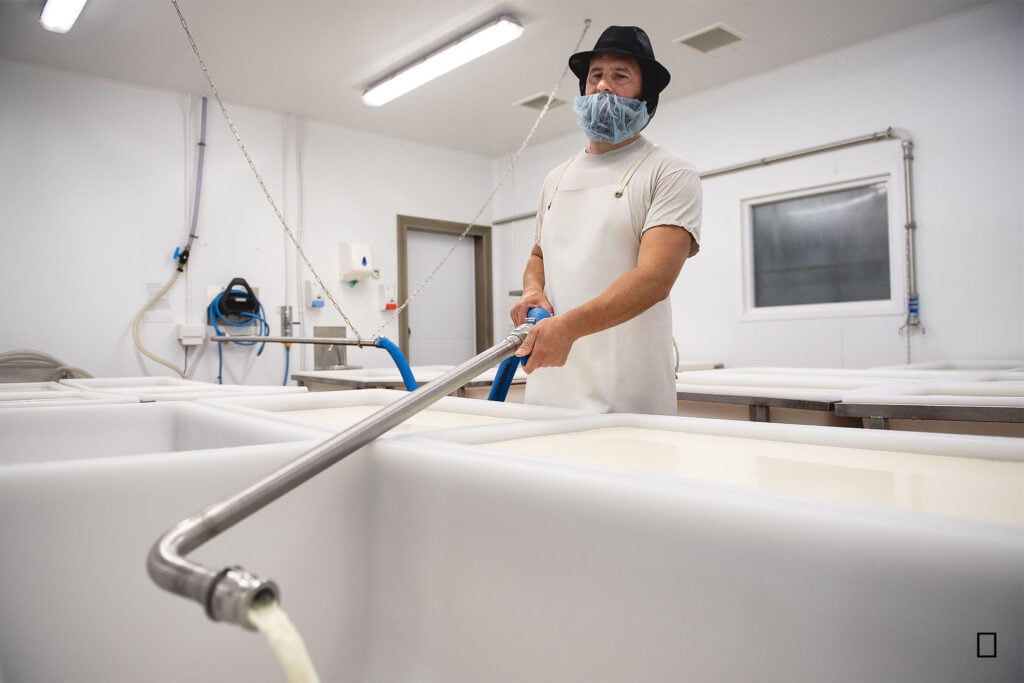
4
Once the milk meets the desired acidity, we gravity feed it into a series of small vats, ready for renneting.
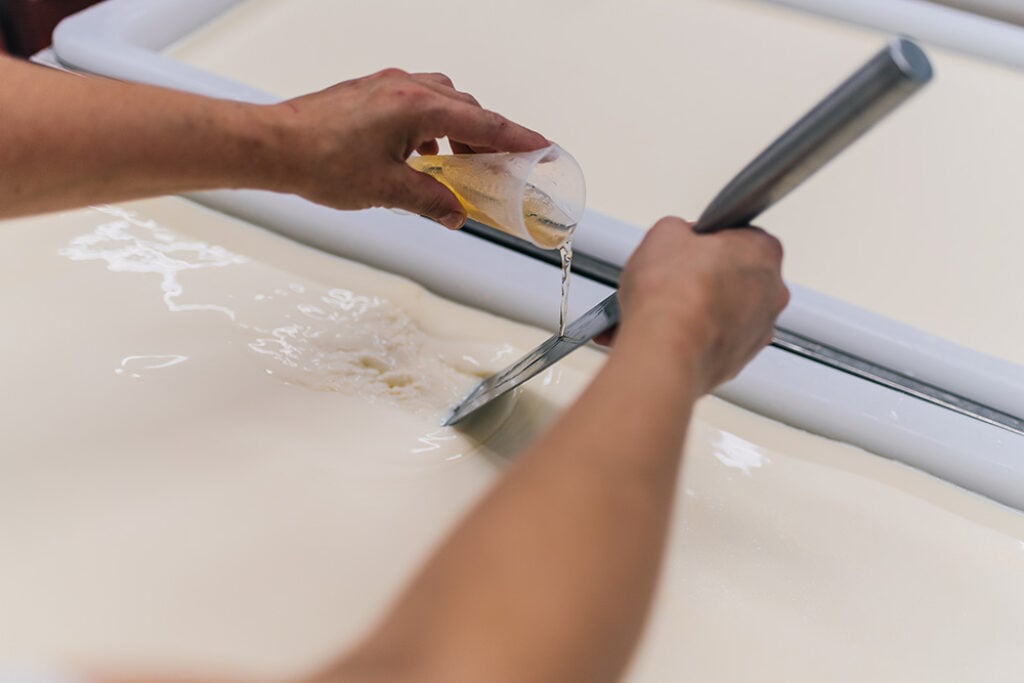
5
Once we have calculated the precise amount of rennet required, we stir it into the milk. The natural enzymes in the rennet begin to coagulate the milk.
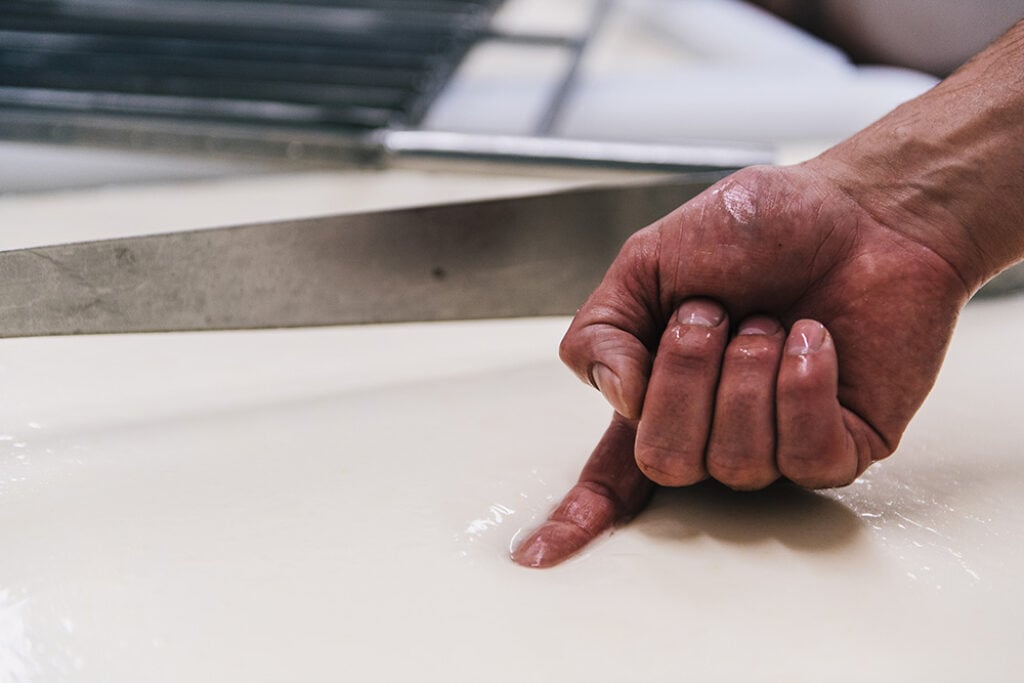
6
Within a precisely calculated window, the rennet transforms the milk into a firm jelly, called curd.
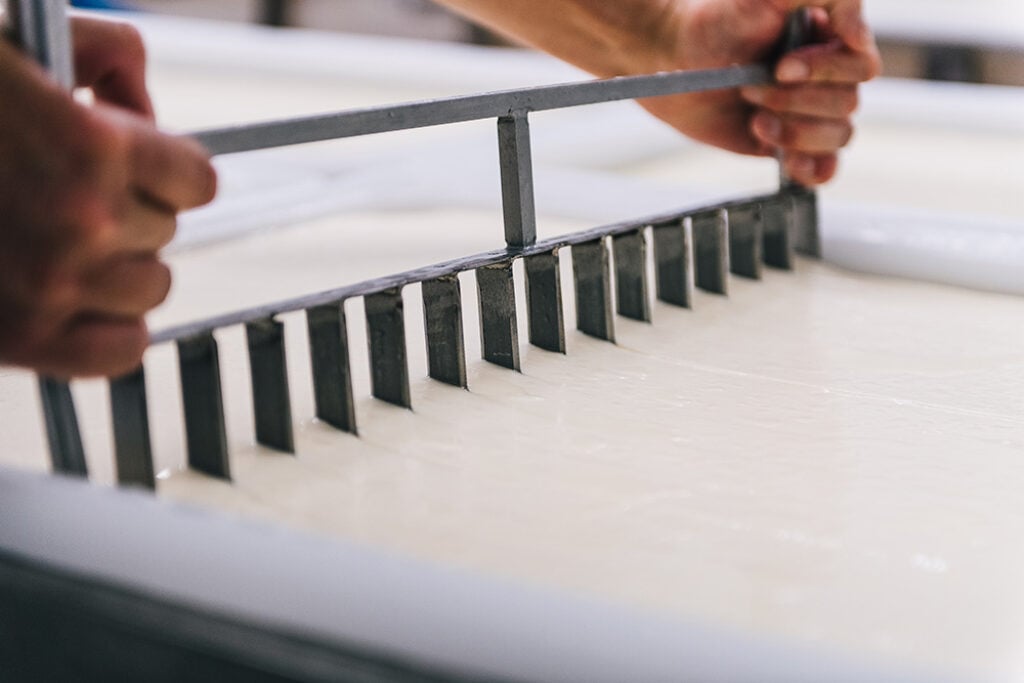
7
The pH and firmness of the curd are carefully monitored. By watching the curd closely, the cheesemaking team know exactly when to cut the curd. Precise cuts are made in the jelly-like curd, to allow the whey (liquid part of the milk) to escape from the curd (solid part of the milk).
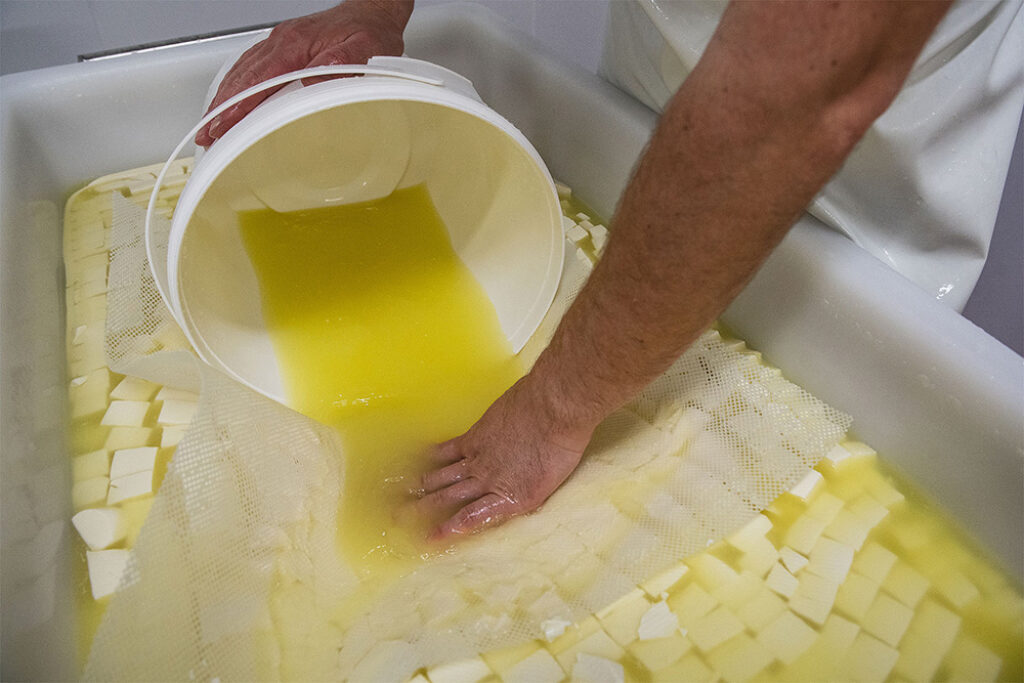
8
As the whey escapes, it forms a deep puddle on top of the curd, which we carefully skim from the top of the vats.
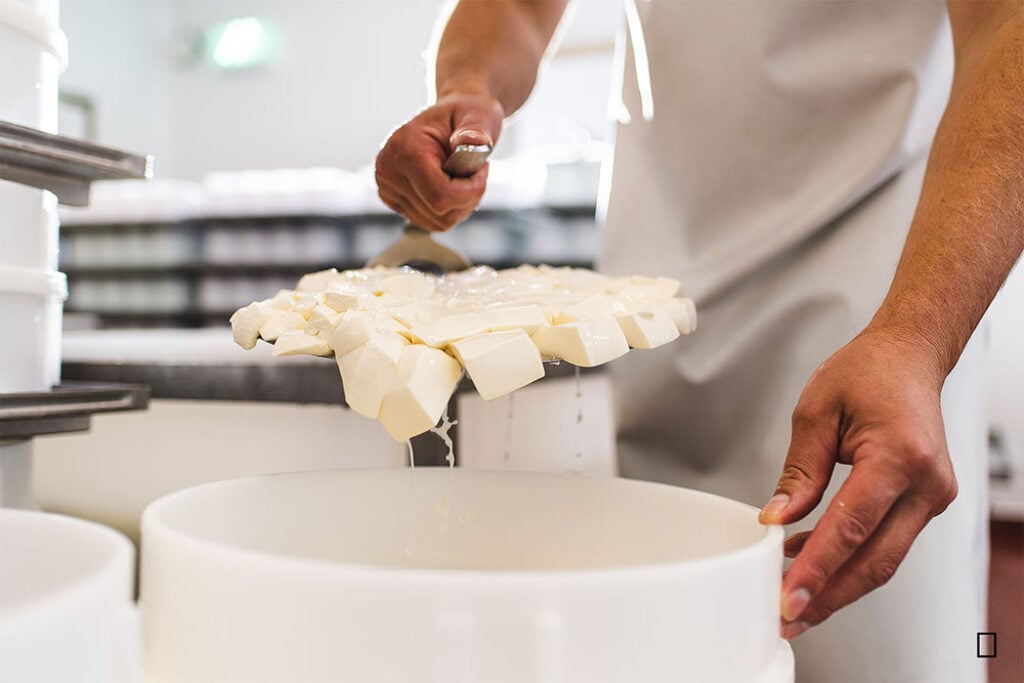
9
The real skill in our cheesemaking process and what we believe makes it so artisanal, is the human element. No machine can emulate this level of care and attention. At this stage of the cheesemaking, we carefully hand-ladle all the curd in small layers into hoop-shaped moulds.
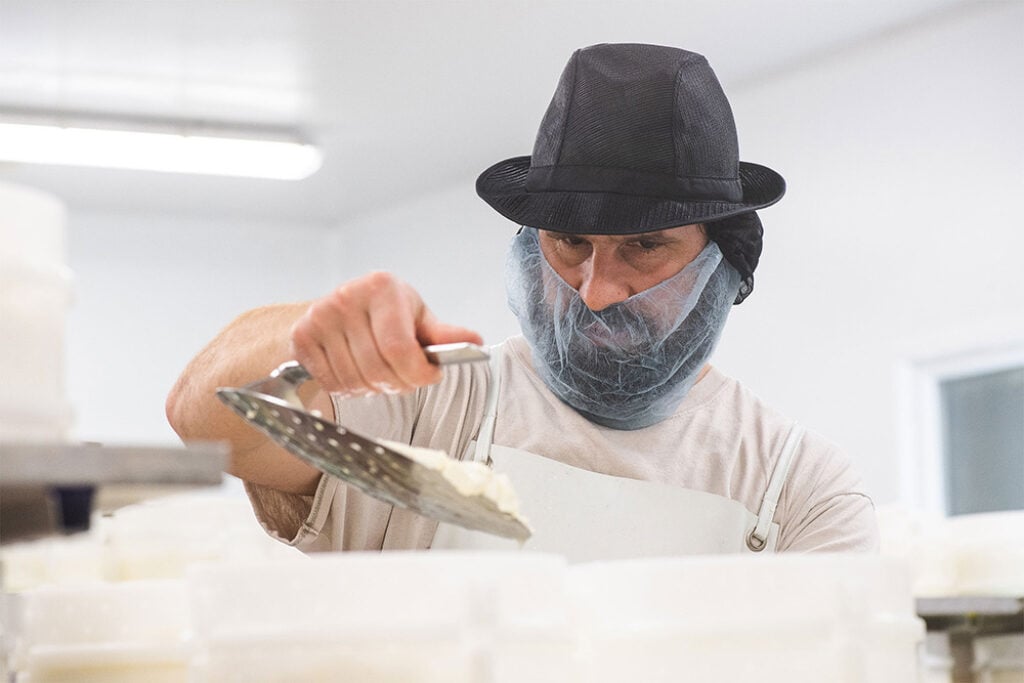
10
A great deal of care and focus is invested at this stage to make sure every single cheese has the right quality and quantity of curd added to the hoops.

11
Over the next few hours, we turn the cheeses over in their hoops to allow the correct level of drainage and to create the shape of the finished cheese. By 9:30pm, the working day is done but the cheesemaking process continues into the next day.
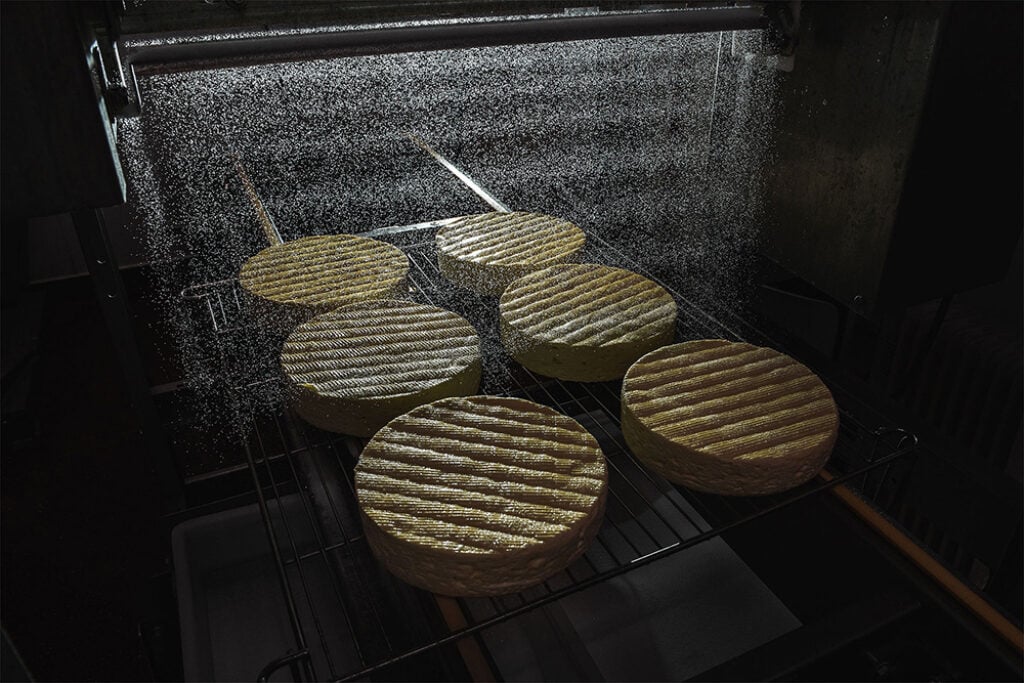
12
At 5am on day 2, we de-hoop the cheeses and after a moisture test and recording of weight, we sprinkle a carefully measured quantity of salt onto both sides of each cheese.
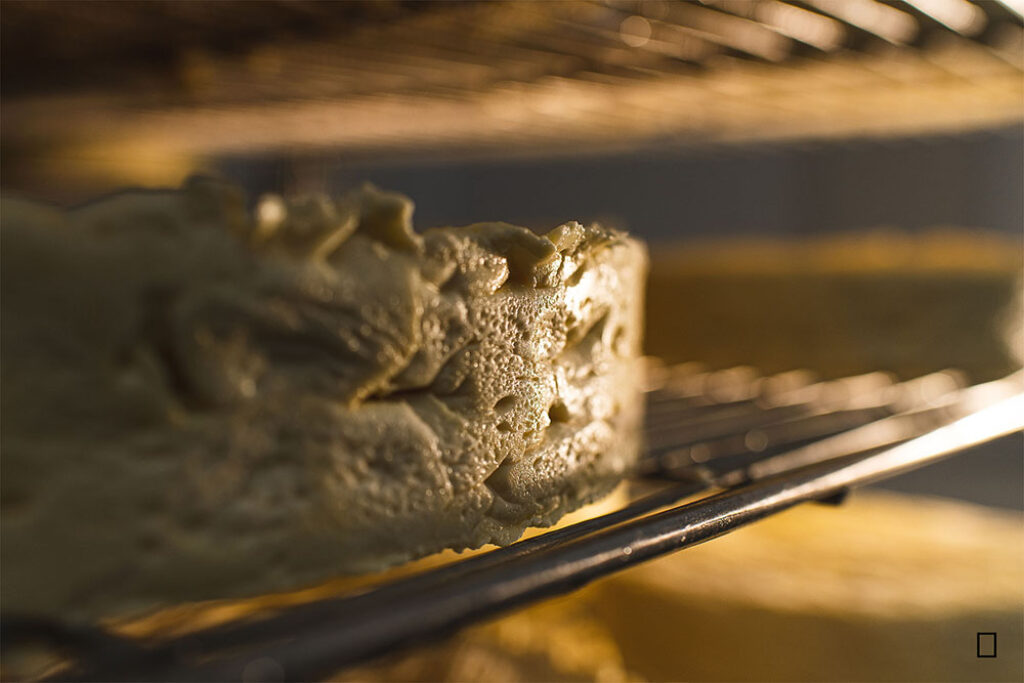
13
Once salted, the cheese begins its maturing process. Over the following few days, each cheese will be hand-turned daily in a warm room, to allow the moulds to develop evenly.
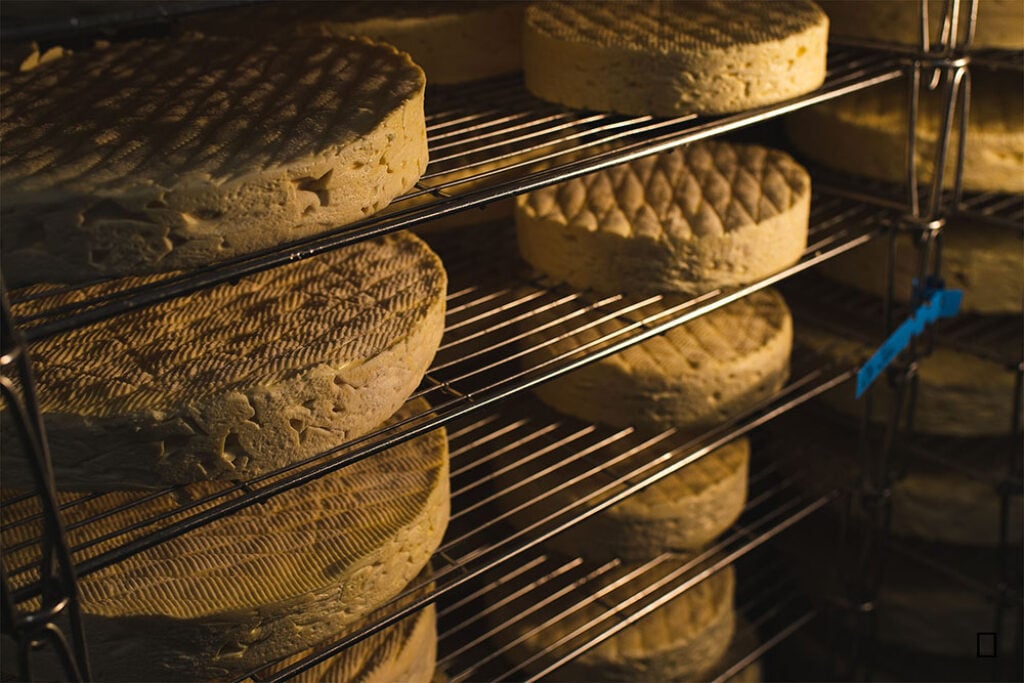
14
By about day 4, little specks of white mould begin to form on the cheese surfaces. In the coming days, the cheese grows more and more of the white mould which is called Penicillium Candidum. Other moulds and yeasts that are native only to our farm and have come in through the air vents or have established in the maturing rooms over time, also begin to grow.
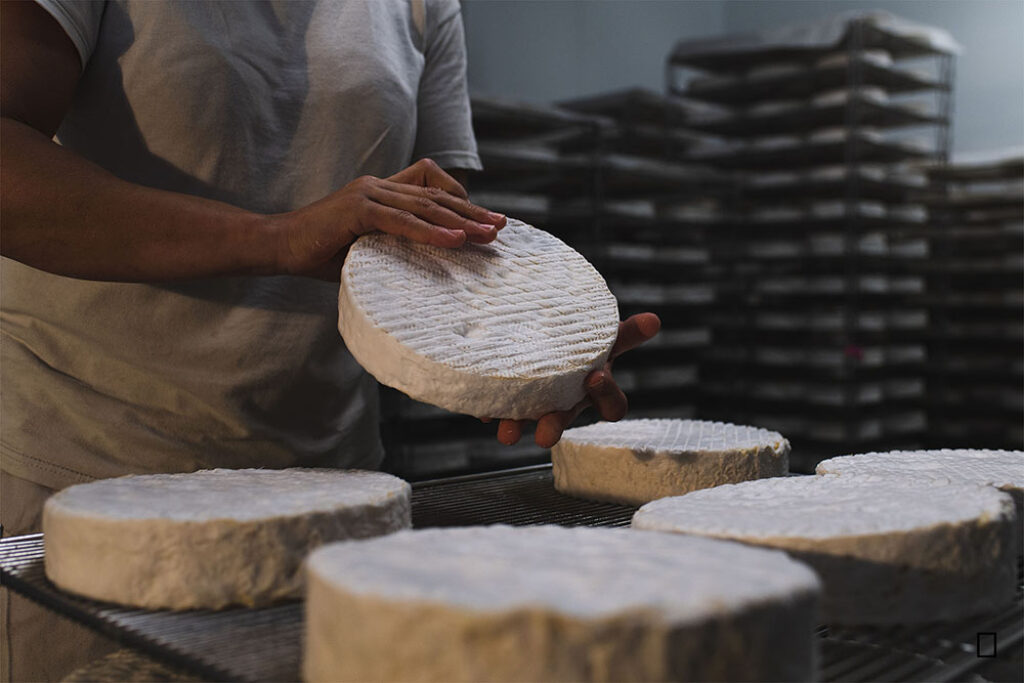
15
We are very careful about how we wash the maturation rooms and walls, as so many of the unique flavours and characteristics of our cheese come from the environment around the farm. We don’t want to disturb the balance!
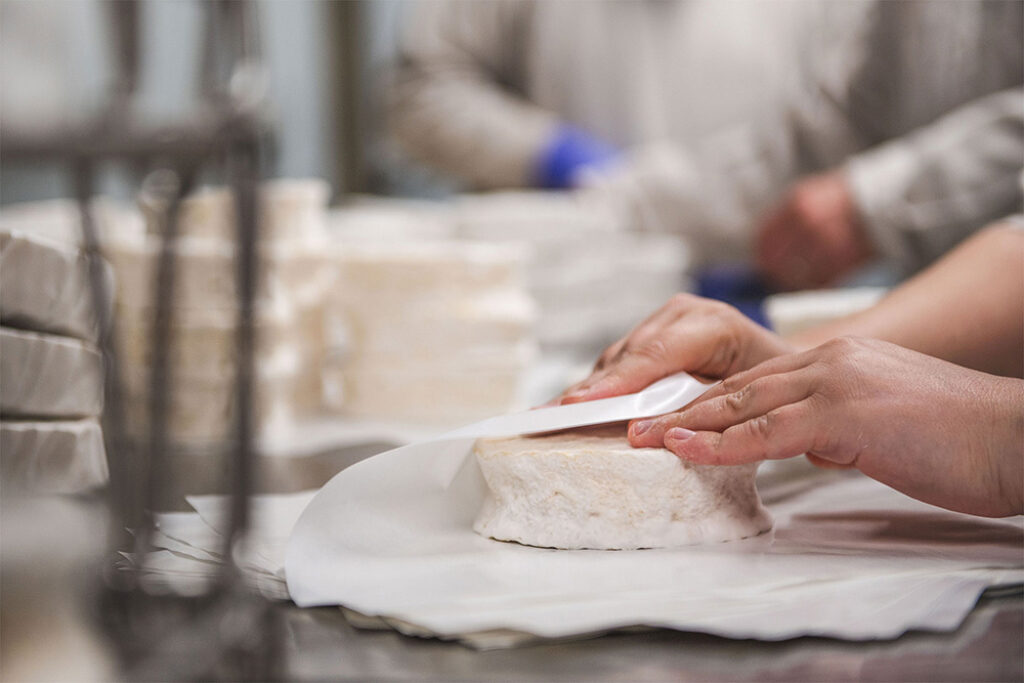
16
Once the cheeses are fully covered in white mould, we then wrap each one in waxed paper and place it in special poplar wood boxes. The boxes play a very important part in the maturation of the cheese, as they help create the right environment for the moulds to break down the curd of the cheese into all that delicious gooeyness.
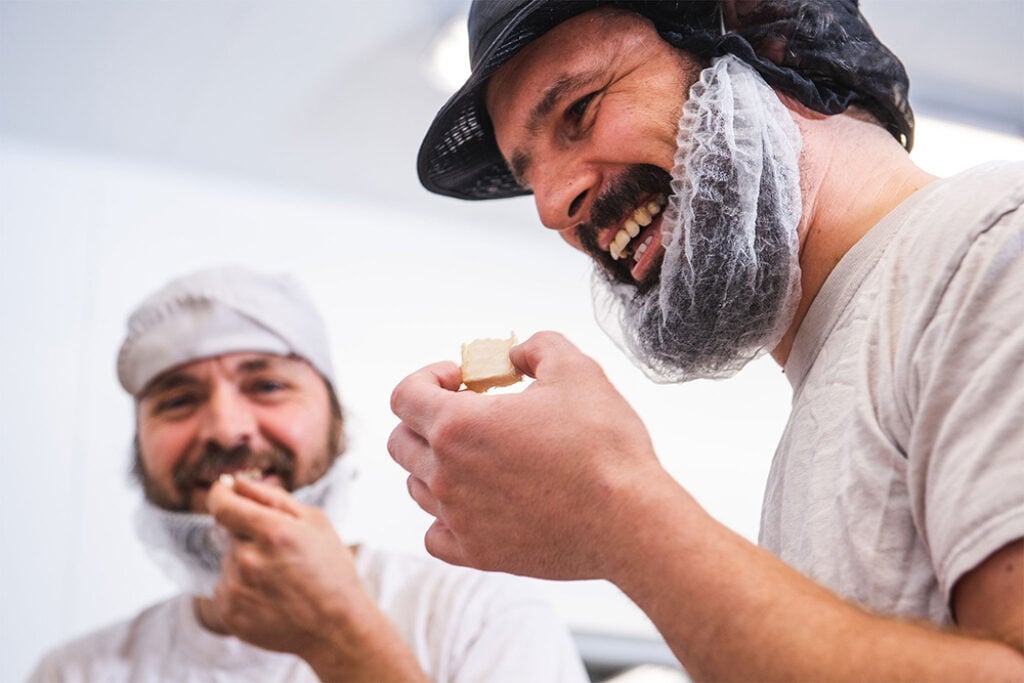
17
Throughout the maturation stages, we taste-test the cheeses at certain ages to check that the maturation is going to plan (it’s a hard life). During these taste tests, we also make decisions about where and when each batch of cheese will be sold, depending on our customers’ requirements.
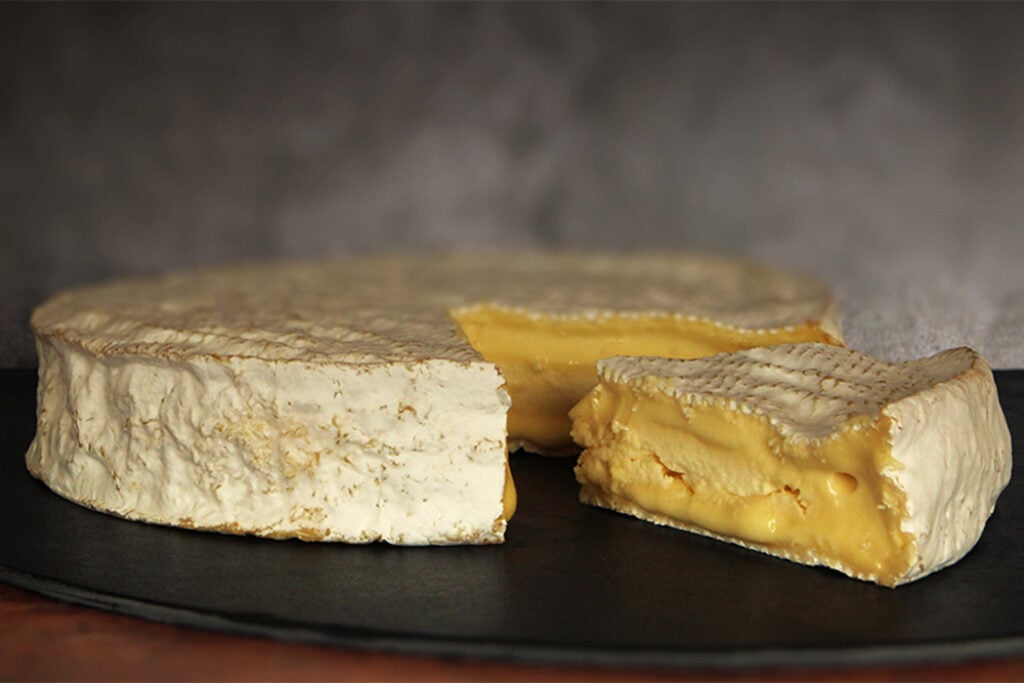
18
Several weeks later, the cheeses are now ready to be eaten. The gooeyness and flavours intensify when the cheese is left at room temperature for 30 minutes to one hour before eating.
Adding Truffle to Baron Bigod
For the ultimate in cheesy decadence, we have Truffle Baron Bigod. It is the same delicious Baron Bigod with an extra twist!
Our award-winning Baron Bigod cheese with a layer of our homemade mascarpone, infused with the finest black truffles. Beneath the nutty, mushroomy rind, Baron Bigod has a smooth, silky golden breakdown which will often ooze out over a layer of our unctuous truffle-infused mascarpone. You will find long lasting flavours of warm earth, farmyard and mushrooms.
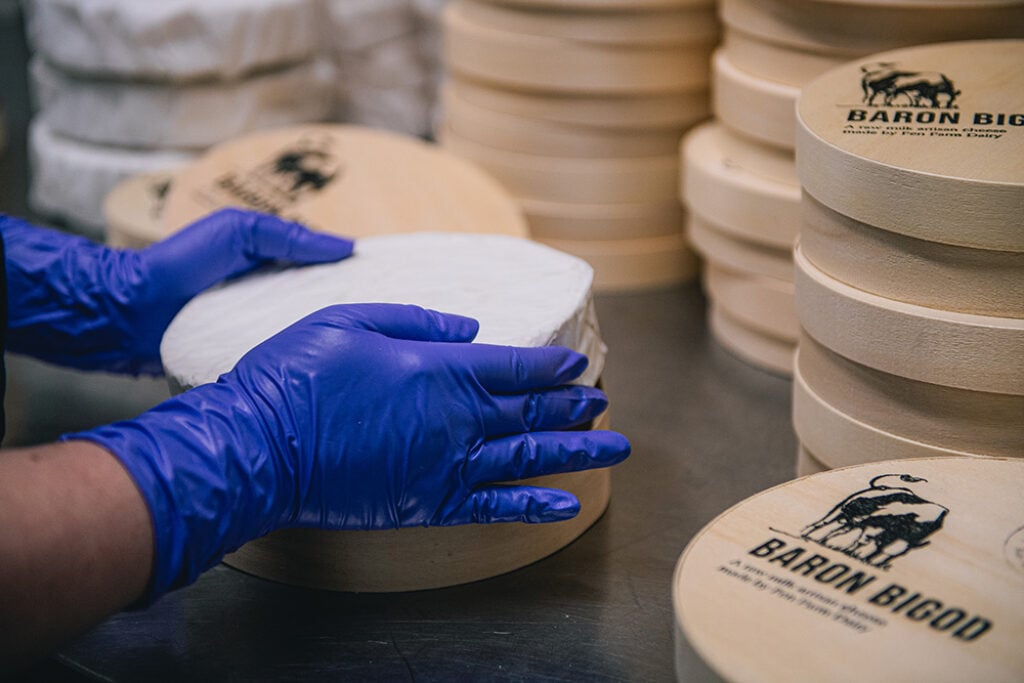
1
A small selection of young Baron Bigod cheeses are selected to become Truffled Baron Bigods!
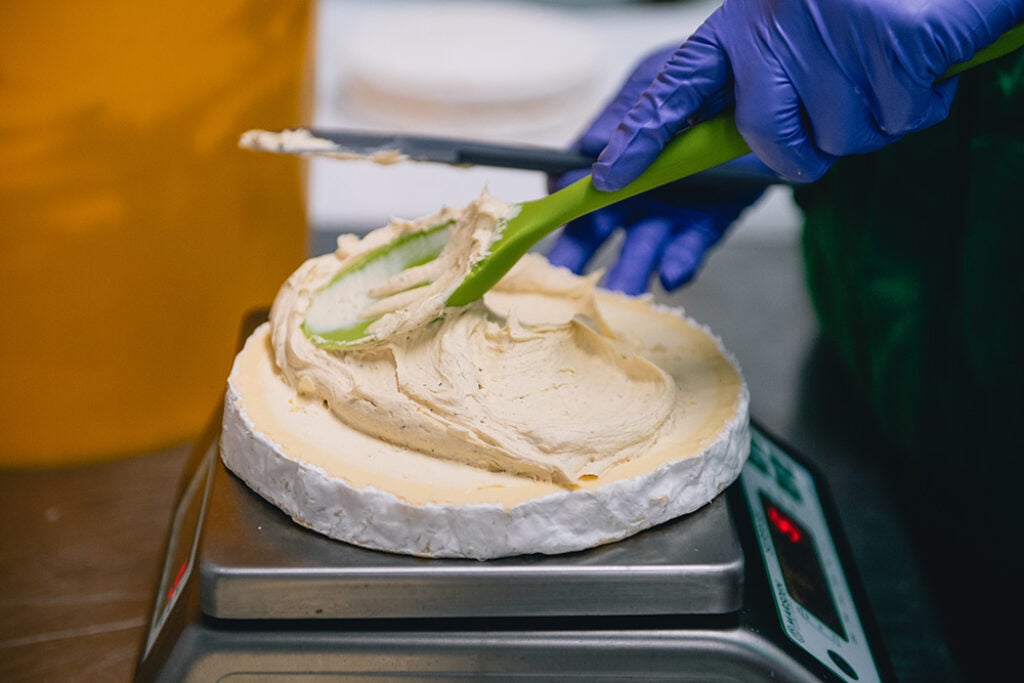
2
A cheese is sliced and a filling of our homemade mascarpone, infused with the finest black truffles is sandwiched between the two halves.
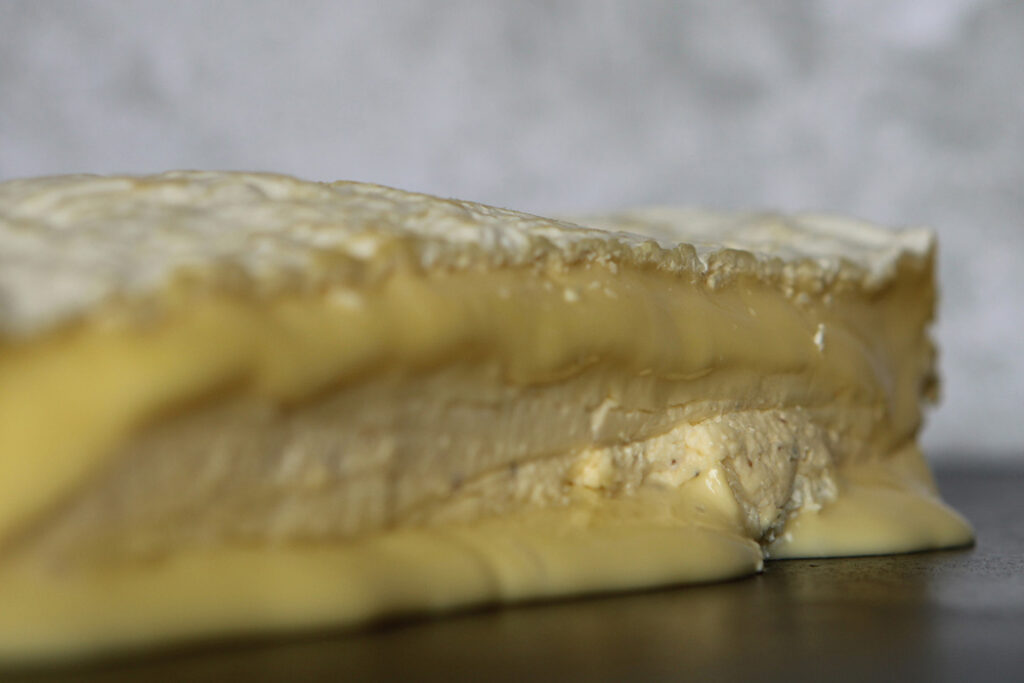
3
The last week of maturation blends the cheese and truffle-infused mascarpone ready for an even greater taste explosion when finally cut and served.
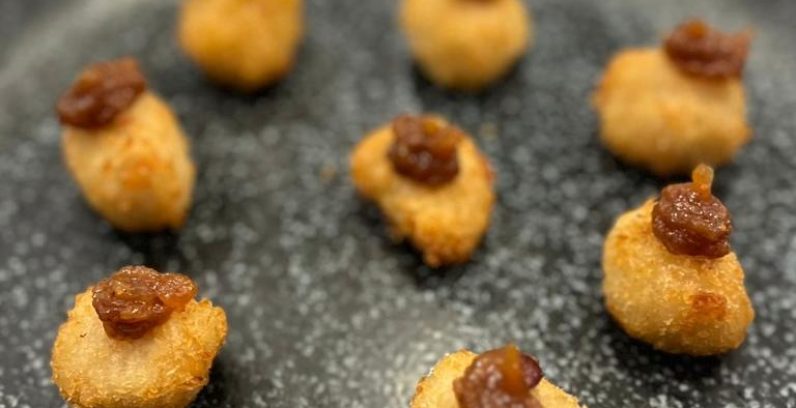
Baron Bigod Fritters with Apple and Fig Chutney by Fox & Goose chef Paul Yaxley

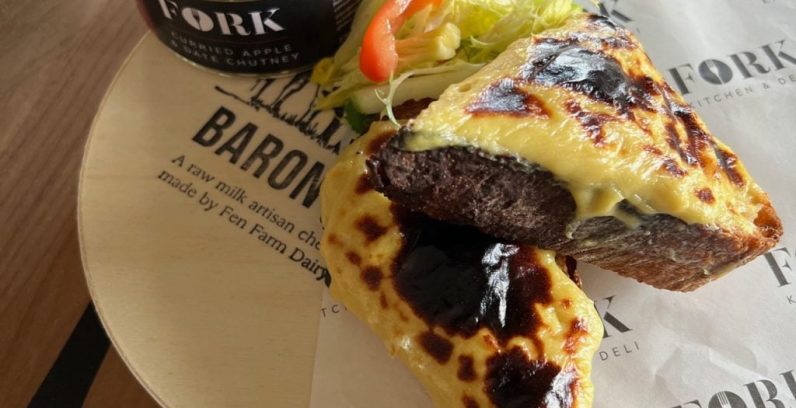
Baron Bigod, Curried Apple & Date Chutney Rarebit by Fork Deli’s Justin Kett

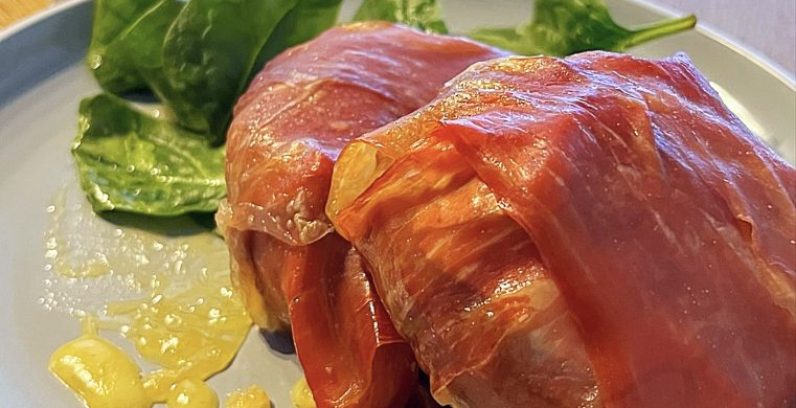
Crumpet and Baron Bigod Pancetta Parcels by Crumpetorium


Heads Up!
Any products in your basket will be removed in order to set up this subscription.

Change Frequency?
You will lose your selecction if you change to a different frequency. Are you sure you want to change?
Clear your box?
This action will clear your current box selection, click cancel to continue shopping, or "That's OK" to clear your box and view single purchase products.

Empty Your Box?
Are you sure you want to remove everything you have selected?

Your box is full!
You will need to remove something before you can add any more, or choose a larger box.

Add to basket?
Adding this product will remove your membership from the basket. If you want both, please checkout and come back?


